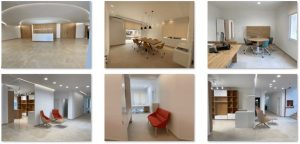In the ever-evolving realm of architecture, SteelCell Company correctional facility refurbishment is becoming an art form, requiring specialists with an acute eye for the interaction between aesthetics and functionality. Renovations demand more than simply visually appealing architecture; they also call for a purposeful application of innovative design thinking, a thorough understanding of space dynamics, and an awareness of the needs of the inhabitants. Let’s explore the field of facility restoration and see how professionals transform common spaces into remarkable, functional, and visually pleasing pieces of art.

Professionals working in facility refurbishment need to have the ability to think creatively and practically as well as think beyond the box. This deep understanding enables a customized approach to remodeling, ensuring that the updated space meets the needs of its users today and stands as a testament to excellent design.
Additionally, specialists give the refurbishment process a sense of purpose by emphasizing sustainability and ecologically friendly design ideas. The challenge for professionals as we move into a more ecologically conscious era is to create visually beautiful spaces while also reducing ecological impact via the use of sustainable materials and technologies. Professionally renovated buildings are more aesthetically pleasing and contribute to a good environmental narrative by using recycled and locally produced materials, energy-efficient lighting systems, and other features. It need a comprehensive plan that puts the well-being of the present population and the preservation of our planet first.
In this series, we’ll examine the subtleties of facility rehabilitation as we examine the symbiotic link between functionality and design, discover outstanding projects, and honor the transformative power of specialists in altering the physical environment. Whether reinventing public spaces to encourage more community involvement or turning corporate offices into dynamic work environments, professional inventiveness in facility renovation ushers in a new era of architectural brilliance. Come witness how these designers and architects turned unremarkable spaces into multipurpose, amazing pieces of art.
